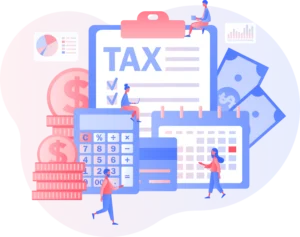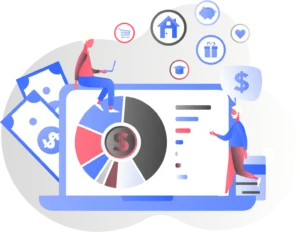Understanding how to minimize your tax burden is invaluable in an economy where the cost of living continues to rise. Canada's tax system, complex as it may be, offers numerous opportunities for tax savings that can significantly improve financial health. There are a variety of strategies to help Canadian residents legally reduce their taxable income and take full advantage of available tax benefits.
Understanding income tax in Canada

The concept of income tax in Canada, established post-WWI, has evolved into a fundamental component of the nation's economic infrastructure. Managed by the Canada Revenue Agency (CRA), the tax system funds essential services like healthcare, education, and social security. Despite its unpopularity, income tax is accepted as a necessary contribution to maintaining the country’s prosperity and supporting those in need.
Navigating Canada's tax collection system
Annually, Canadians are required to file a tax return detailing all sources of income, including investment gains, and claim any applicable deductions or credits. The CRA relies on taxpayers' honesty in reporting their earnings accurately. For 2021, the agency issued refunds totalling $37.3 billion, with an average refund of $2,093.00, highlighting the significance of understanding and applying tax-saving strategies effectively.
Advertisements
Key tax-saving strategies
The following are some legal ways to reduce your tax liabilities and improve your position for a higher return now and in future years.
Leverage Registered Retirement Savings Plans (RRSPs)
Why it works: Contributions to your RRSP are tax-deductible, lowering your taxable income. Additionally, investments within your RRSP grow tax-free until withdrawal in retirement, potentially at a lower tax bracket.
How to maximize: Ensure you contribute up to your annual limit to maximize tax deductions. Consider timing retirement withdrawals for when you may be in a lower tax bracket.
Contribute to a Spouse’s RRSP
Why it works: Contributing to your spouse or common-law partner's RRSP can help balance retirement income, potentially lowering your household's overall tax rate.
How to maximize: Use income splitting to even out retirement savings and income distributions, reducing the tax burden.
Take advantage of Tax-Free Savings Accounts (TFSAs)
Why it works: TFSAs allow your investments to grow tax-free without taxing withdrawals. Though contributions are not tax-deductible, earning investment income tax-free is a significant advantage.
How to maximize: Max out your TFSA contribution room each year and use it for investments expected to yield high returns, as all growth is tax-free.
Charitable donations
Why it works: Unused charitable donation credits can be carried forward for up to five years, offering a strategy to reduce taxable income when it benefits you most.
How to maximize: Consolidate charitable donations in a year to surpass the standard deduction threshold and maximize the tax benefit.
Deduct home office expenses
Eligibility: If you've worked from home more than 50% of the time for at least four consecutive weeks, you may be eligible to claim home office expenses.
How to maximize: Utilize the flat rate method for a straightforward deduction or itemize your expenses for potentially more significant savings if you meet the criteria.
Employ family members
Why it works: Hiring family members can shift income and allow you to deduct their salaries as business expenses, reducing your taxable income.
Considerations: Ensure employment arrangements are legitimate and comply with tax laws to avoid scrutiny from the CRA.
Electronic Filing and Tax Software
Filing taxes electronically through CRA-approved software can expedite your refund and help identify additional deductions and credits, potentially reducing your tax burden.
Employer-sponsored benefits and other deductions
If your employer offers RRSP contributions matching, ensure you contribute enough to receive the maximum match, essentially free money.
Claim childcare expenses against the Child Care Tax Credit to reduce taxable income, applicable for working parents or those studying.
Planning and timing
Always file your taxes before the government-set deadline. A timely filing avoids penalties and interest, ensuring you immediately benefit from refunds or credits.
Consulting with a tax professional for complex tax situations can uncover additional savings and ensure compliance with tax laws.
By implementing these tax-saving strategies, Canadians can significantly reduce their tax liability and enhance their financial well-being. The key is to understand your personal tax situation and plan your finances to maximize the use of available deductions and credits.
Advertisements
Diversifying your investment portfolio

Investing wisely not only builds wealth but can also provide significant tax advantages. The following table provides an overview of investment income taxation.
| Investment type | Tax benefit | Considerations |
| Capital gains | Only 50% taxable | Favourable for long-term investments |
| Dividend companies | Eligible for dividend tax credit | Best for income from Canadian companies |
| Rental income | Deductible expenses (maintenance, interest, etc.) | Must be declared as income |
| TFSAs | Tax-free growth and withdrawals | Annual contribution limits apply |
| RRSPs | Tax-deferred growth, deductions for contributions | Taxable upon withdrawal |
Mutual funds and ETFs
Mutual funds and ETFs (Exchange-Traded Funds) can generate capital gains and dividend income taxed differently in Canada. While capital gains are taxed favourably (only 50% of gains are taxable), dividend income from Canadian corporations benefits from the dividend tax credit, reducing the tax burden.
Real estate
Real estate can offer several tax advantages, including the potential for rental income deductions and the Principal Residence Exemption, which shields the sale of your primary home from capital gains tax.
Investing in education savings
Investing in a Registered Education Savings Plan (RESP) for your children or grandchildren supports their future education and provides tax benefits. Contributions grow tax-free until withdrawal, and the government contributes up to 20% on the first $2,500 per year through the Canada Education Savings Grant (CESG).
Advertisements
Tax credits and deductions for families
The Canadian tax system offers various tax credits and deductions to support families. Understanding these can lead to significant tax savings:
- Childcare expenses: The deduction is available for children under 16, allowing families to claim a portion of daycare, camp, and other childcare costs.
- Canada Child Benefit (CCB): The CCB is a tax-free monthly payment to eligible families to help with the cost of raising children.
Tax considerations for small business owners and entrepreneurs
Small business owners have unique opportunities to reduce their tax liabilities. The following table outlines some of the small business tax deductions available.
| Deduction category | Examples |
| Capital expenses | Equipment, vehicles (capital cost allowance) |
| Operating expenses | Rent, utilities, office supplies |
| Home office | Proportionate share of home expenses |
| Employment expenses | Salaries, benefits to employees |
Business expenses
Everything from office supplies to business use-of-home expenses can be deducted to lower your business's taxable income.
Incorporation benefits
Small businesses benefit from a lower corporate tax rate than personal income tax rates for high earners.
Advanced tax planning strategies
Income splitting involves transferring income within a family to lower the overall tax burden. Strategies include spousal loans, paying salaries to family members, and splitting pension income.
Also, investing in specific life insurance policies can offer tax benefits, as the death benefit is typically tax-free to the beneficiary, and some policies allow for tax-advantaged investment growth.
Individual Pension Plans (IPPs)
For high-income earners and business owners, IPPs offer a way to contribute more towards retirement savings than RRSPs permit, providing immediate tax deductions and future retirement benefits.
Numerous ways exist to optimize your tax situation, whether through investments, education savings, family-focused deductions, or strategic business planning. Consulting with a financial advisor or tax professional can provide personalized advice tailored to your circumstances, ensuring you maximize your tax savings potential.
Tax planning is a mature and deliberate decision
Thomas C. Chan Financial Services does a tremendous job outlining tax-saving strategies in Canada in this video.
Tax planning is a dynamic and integral part of managing your financial health. Canadians can significantly reduce their tax liabilities by employing the strategies discussed, from maximizing RRSP and TFSA contributions to leveraging business deductions and investment strategies.
Control your future
Take control of your tax situation by implementing tax strategies and continuously seeking opportunities to reduce your annual burden. For complex situations, consider consulting with a financial advisor to tailor a tax plan to your unique circumstances. Proactively managing your taxes can maximize your financial well-being and secure a prosperous future.
Creditpicks regularly publishes articles on taxation in Canada and the United States. Subscribe to our browser alerts to stay up to date with the latest trends in personal finance.
Advertisements




